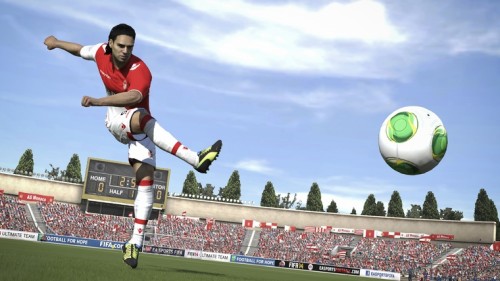How we fixed the air resistance in the famous video game

When the soccer game FIFA 14 hit the stores in the fall of 2013, it finally featured the ball sailing through the air in a smart way. In previous versions of the popular game, the ball sometimes "floated" a little too much, and flew in a straight line, unlike in reality.
A year ago, a team of scientists and animators concluded saying to get to the root of the problem. After an extensive review of all the software code to calculate physical cruise routes in the game, they found the problem: the drag coefficient was wrong.
Engineers use the drag coefficient to model air resistance, which affects the speed of flying objects and their trajectory. "The ball's maximum speed is immediately after the kick, and air resistance immediately slows it down until it reaches maximum height," says John Eric Goff, a physicist at Lynchburg College and author of "Gold Medal in Physics: The Science of Sports." "The ball should accelerate as it falls down."
In previous versions of FIFA, the ball violated the laws of physics: it accelerated and decelerated uniformly regardless of the initial speed. "That is, if the ball was flying at a speed of 50 or 80 kilometers per hour, it would slow down at the same rate as a ball flying at a speed of 5 kilometers per hour," explains Aaron McHardy, senior game producer at EA Sports, the company that issues the FIFA franchise.
The drag coefficient error also caused an unrealistic spin of the ball. When a ball spins, it moves the air around it in a certain direction and the "Magnus effect" deflects the ball in the opposite direction in an arcing path. The miscalculation of the Magnus effect meant that the arc trajectories were very similar to each other in all conditions. "After the fix, the ball spun as it should, and we got a greater variance of arc trajectories," says McHardy.
"Now the ball finally dives and spins and does all the things we see in real life."
The article was published with the permission of Scientific American Israel
